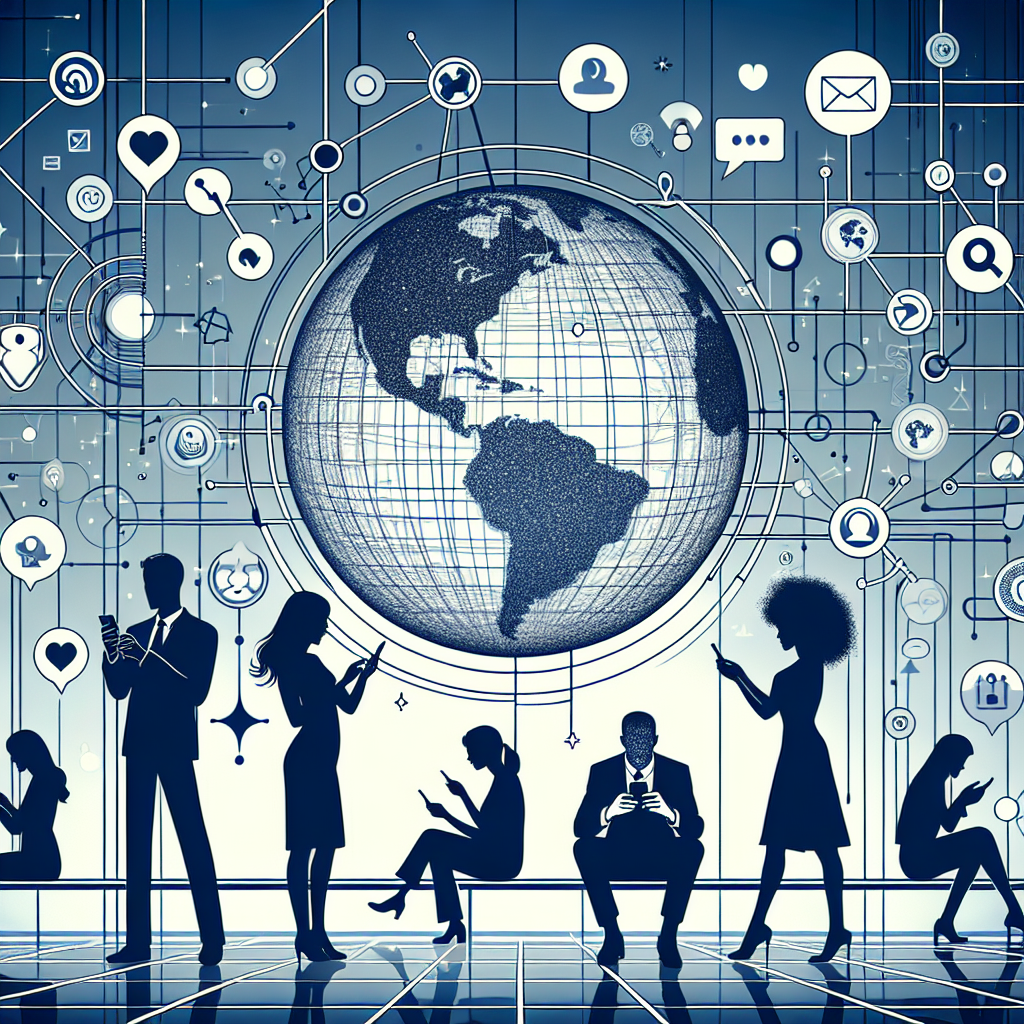
Introduction: The New Age of Connectivity
In today’s digital landscape, social media platforms have transcended their original purpose of mere communication to become powerful tools that shape human behavior and social patterns. As we delve into the intricate relationship between social media and behavior patterns, it becomes evident how deeply interwoven our online interactions are with our daily lives. The impact is profound, transforming not only personal relationships but also professional dynamics and societal norms. This exploration of Social Media and Behavior Patterns: How Connectivity Shapes Our Interactions reveals vital insights into our increasingly interconnected world.
The Psychology Behind Our Online Interactions
Understanding the psychology of social media is crucial for comprehending its impacts on behavior. According to psychologists, the desire for social validation and affirmation is a fundamental human drive. Social media caters to this need, allowing individuals to present idealized versions of themselves and seek approval through likes, shares, and comments.
Case Study: The Instagram Effect
Consider the phenomenon often referred to as the "Instagram Effect." A study conducted in 2020 found that individuals using Instagram exhibited higher levels of anxiety and lower self-esteem, particularly among young adults. As users compared their lives with those of others portrayed as more appealing, the divergence created feelings of inadequacy. This case highlights how Social Media and Behavior Patterns: How Connectivity Shapes Our Interactions can lead to detrimental psychological outcomes, shaping not only individual behavior but also overall societal well-being.
The Role of Algorithms in Shaping Behavior
Social media platforms utilize sophisticated algorithms to curate content based on user behavior. This results in what is known as the "echo chamber" effect, where individuals are exposed primarily to information and opinions that reinforce their existing beliefs and behaviors.
Table: Impact of Algorithmic Curation on User Behavior
| Behavioral Impact | Description | Example |
|---|---|---|
| Confirmation Bias | Users favor information that aligns with their views | Political affiliation on Facebook |
| Polarization | Increased division among groups | Online forums centered on extreme ideologies |
| Reduced Critical Thinking | Over-reliance on curated information | Acceptance of misinformation in news feeds |
Connectivity and Social Relationships
Social media has redefined the parameters of relationships, both fostering and fracturing connections. While platforms like Facebook and LinkedIn allow for networking and maintaining contact with friends and colleagues, they also create avenues for misunderstandings and conflicts.
Case Study: Friendship Dynamics on Facebook
In a study of Facebook friendships, researchers discovered that users with a large network of online friends were more likely to experience feelings of loneliness. The superficial nature of these connections often lacks the depth and emotional support found in face-to-face relationships. As such, this underscores how Social Media and Behavior Patterns: How Connectivity Shapes Our Interactions can form a paradox: increased connectivity can lead to reduced emotional durability in relationships.
The Cultural Impact of Social Media Interactions
Social media platforms not only influence personal behavior but also play a crucial role in shaping cultural norms. The rapid spread of trends and ideas has altered how cultures evolve and interact.
Chart: Global Trends Driven by Social Media
| Trend | Originating Platform | Impact Duration |
|---|---|---|
| #MeToo Movement | Enduring cultural dialogue | |
| TikTok Dance Challenges | TikTok | Short-lived yet viral |
| Influencer Marketing | Long-term industry transformation |
These trends illustrate that social media is not merely a reflection of cultural changes but an active participant in driving societal progress and shifts in behavior.
The Business Landscape: Redefining Marketing and Consumer Behavior
The emergence of social media has transformed marketing strategies and consumer interactions. Businesses leverage these platforms to engage with customers on a personal level, impacting buying behavior significantly.
Case Study: Nike’s "Just Do It" Campaign on Social Media
Nike effectively utilized social media in its "Just Do It" campaign featuring athletes from diverse backgrounds, which resonated widely with various demographic audiences. This highlights how Social Media and Behavior Patterns: How Connectivity Shapes Our Interactions can create powerful brand loyalty and drive consumer behavior through relatability and authenticity.
Mental Health Considerations
While connectivity offers many benefits, it also poses significant risks to mental health. Studies indicate a strong correlation between excessive social media use and mental health issues such as anxiety, depression, and stress.
Table: Mental Health Impact of Social Media Use
| Mental Health Issue | Associated Behavior | Prevention Strategy |
|---|---|---|
| Anxiety | Frequent checking of social media notifications | Scheduled offline periods |
| Depression | Comparison with idealized online personas | Critically evaluate social media consumption |
| Body Image Issues | Exposure to edited, unrealistic images | Engage with body-positive content |
The Future of Social Media Interactions
As we look to the future, the landscape of social media is ever-evolving. Emerging technologies like virtual reality (VR) and artificial intelligence (AI) are poised to revolutionize interactions in ways we cannot fully anticipate.
Case Study: Rise of Virtual Reality Social Platforms
Platforms like VRChat are creating immersive environments for users to connect in real time, redefining the meaning of online interaction. This illustrates how Social Media and Behavior Patterns: How Connectivity Shapes Our Interactions will continue to evolve, challenging our conventional understanding of relationships and communication.
Conclusion: Navigating Our Interconnected World
As we navigate the complexities of social media and its influence on behavior patterns, it is essential to foster healthy connectivity. Being conscious of how these platforms shape our interactions can empower us to use social media in a way that enhances, rather than detracts from, our lives.
Ultimately, recognizing the intricacies of Social Media and Behavior Patterns: How Connectivity Shapes Our Interactions is the first step toward creating a more meaningful and positive digital experience.
FAQs
1. How does social media influence mental health?
Social media can both positively and negatively impact mental health by fostering connections or increasing feelings of inadequacy and anxiety through comparison and cyberbullying.
2. Can social media enhance professional interactions?
Yes, platforms like LinkedIn create opportunities for networking, job searching, and professional growth, thus enhancing career development.
3. How do algorithms affect user behavior on social media?
Algorithms curate content that aligns with user preferences, thereby reinforcing existing beliefs and reducing exposure to diverse opinions.
4. What are some strategies for healthy social media use?
Strategies include setting time limits, following diverse accounts, and taking regular breaks to minimize negative impacts.
5. Will social media continue to evolve?
Absolutely. Emerging technologies and trends indicate that social media will continue to adapt, affecting how we interact, communicate, and engage with each other.
By recognizing the positive and negative aspects of social media, we can strive to promote a healthier digital environment that nurtures meaningful interactions and supports well-being in our interconnected lives.











